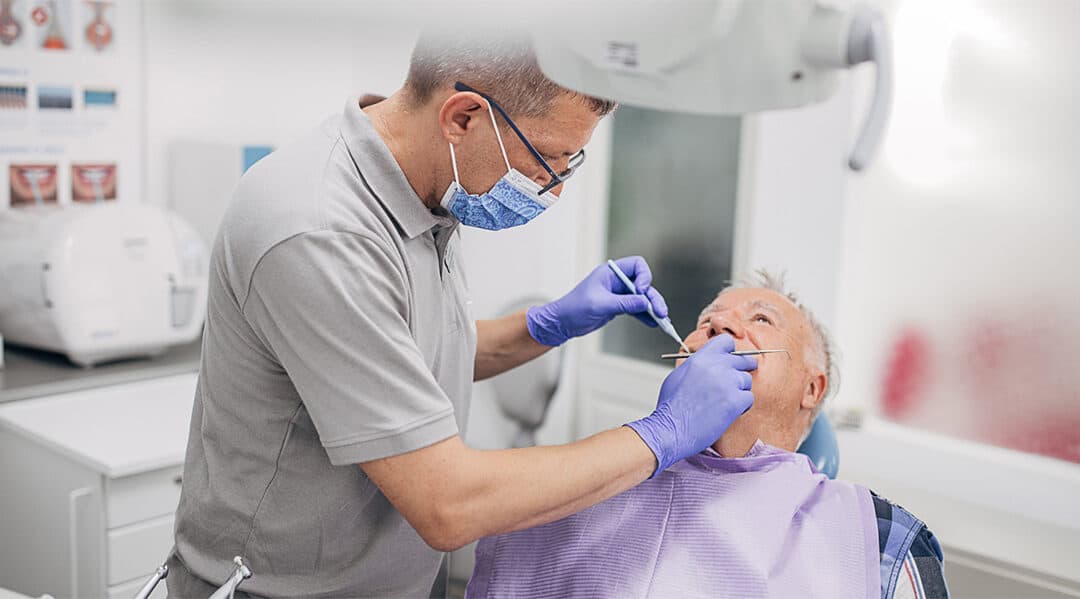Historically, oral cancer was thought to be an age-related malignancy; however, the growing prevalence of associated risk factors expands the demographic to younger age groups. This alarming shift brings to light the critical importance of proactive detection strategies. If oral cancer is left untreated until later stages (III and IV), the five-year survival rate drops to under 50%.1
The challenge lies in the fact that symptoms are typically missed in early stages. Now more than ever, providers are in a race against time to diagnose and treat patients before the disease progresses to a more dangerous form.
The need for early detection
If providers succeed in catching oral cancer in the earlier stages (I and II), patient outcomes can be significantly improved. In fact, the average survival rate in these stages can reach 90%.1 Likewise, early detection obviates the need for major reconstructive surgery, facial prostheses, and years of extensive therapy to regain function.
For many patients, the journey to a diagnosis is delayed by identifying early-stage symptoms and extended multi-provider assessment period. One scoping review found that patients waited up to six months for an oral squamous cell carcinoma diagnosis.2 This diagnostic delay may further escalate a patient’s condition, thereby limiting treatment options to disfiguring operations that significantly impair quality of life.
Pinpointing the right age
Although the average age for an oral cancer diagnosis is 64, more than 20% of cases are found in patients younger than 55 years old.3 As such, providers should be on the lookout for symptoms and clinical risk factors in patients of all ages. The Oral Cancer Foundation recommends annual screenings starting once patients reach 18 years of age.4
However, patients engaging in certain lifestyle habits should undergo regular screenings earlier than the standard recommendation. Patients with a history of tobacco use should start screening at the onset of use, as smoking multiplies the risk of oral cancer up to ten times and long-term smokeless tobacco use increases the risk 50-fold.5
Staying ahead of oral cancer requires consistent evaluation and accurate screening. Vigilant Biosciences® pairs a deep understanding of oral cancer with leading expertise in detection technology to forge a new path in the diagnostic process. The Vigilant team is actively working to deliver the most cutting-edge solutions to help providers identify, diagnose, and treat oral cancer earlier than ever.
Sources
1. Oral Cancer Foundation. (n.d.). Oral Cancer Foundation. Retrieved March 15, 2023, from https://oralcancerfoundation.org/?gclid=Cj0KCQjw2cWgBhDYARIsALggUhoUo4AK8qplxhAyEF1r8Pu0iL1nsi4f1WuhDGDsCqfFf8iNco4poz8aAj2FEALw_wcB
2. Mauceri, R., Bazzano, M., Coppini, M., Tozzo, P., Panzarella, V., Campisi, G. (2022). Diagnostic delay of oral squamous cell carcinoma and the fear of diagnosis: A scoping review. Frontiers in Psychology 13.
3. Key Statistics for Oral Cavity and Oropharyngeal Cancers. (2023, January 18). American Cancer Society. https://www.cancer.org/cancer/oral-cavity-and-oropharyngeal-cancer/about/key-statistics.html
4. Screening. (n.d.). Oral Cancer Foundation. Retrieved March 15, 2023, from https://oralcancerfoundation.org/screening/
5. Risk Factors. (n.d.). Oral Cancer Foundation. Retrieved March 15, 2023, from https://oralcancerfoundation.org/cdc/risk-factors/
